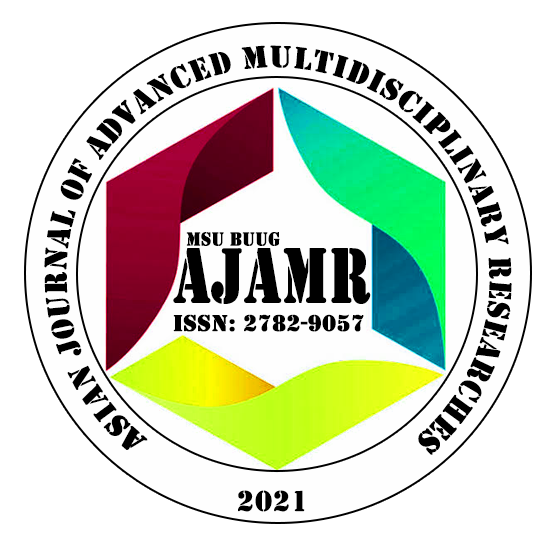

Authors: Jodel J. Lipasan, Alfrancis M. Gonzaga, Tyron James J. Into,
*Floriefe G. Torino
College of Fisheries, Mindanao State University Buug – R.T. Lim Extension, R.T. Lim Zamboanga Sibugay, Philippines
Email: floriefe.torino@msubuug.edu.ph
ABSTRACT
The possible role of integrating seaweed, Kappaphycus alvarezii and Pacific oyster, Crassostrea gigas in a tilapia static culture system was
investigated. The effect of their bioremediating capacity on the growth performance of tilapia (iBEST strain) fingerlings were evaluated over a
28-day period. The study consists of four treatments T1 (control), T2 (seaweeds at 100g), T3 (oyster at 10pcs), and T4 (seaweeds at 100g +
oyster at 10pcs) with three replicates arranged in a completely randomized design. Tilapia fingerlings with an average body weight of 7.5 grams
were stocked at a density of 10 fish per aquarium. The experimental set-up consisted of a static culture system with 12 aquaria (15L capacity)
continuously aerated. The fish were fed with commercial feeds with a daily feed ration equivalent to 10% of their average body weight. Results
showed no significant differences in mean weight gain, specific growth rate, survival rate and feed conversion ratio of the tilapia fingerlings.
This demonstrates that the presence of seaweed and oyster did not significantly affect fish growth. Additionally, there was also no significant
variation observed in oyster growth. However, a negative weight gain, specific growth rate and survival rate of K. alvarezii were observed in
K. alvarezii seaweed treatments, indicating an adverse effect on the seaweed. Regarding bioremediation potential, the control group had
significantly higher levels of ammonia and nitrite compared to the treatments with oyster and seaweed. Nitrate concentrations remained
relatively stable throughout the study, with no notable variations. A decreasing trend in phosphate levels was observed, indicating a reduction
in nutrient concentrations, highlighting the significant impact of seaweed and oyster on water quality. In conclusion, integrating Crassostrea
gigas oysters and seaweeds in the tilapia culture system is a promising approach. However, it is recommended to explore alternative seaweed
species that can withstand a zero-water exchange system to enhance the overall sustainability of the integrated system.
Keywords: seaweed integration, bioremediation, phytoremediation, zooremediation, aquaculture sustainability, nutrient reduction, zero-water
exchange